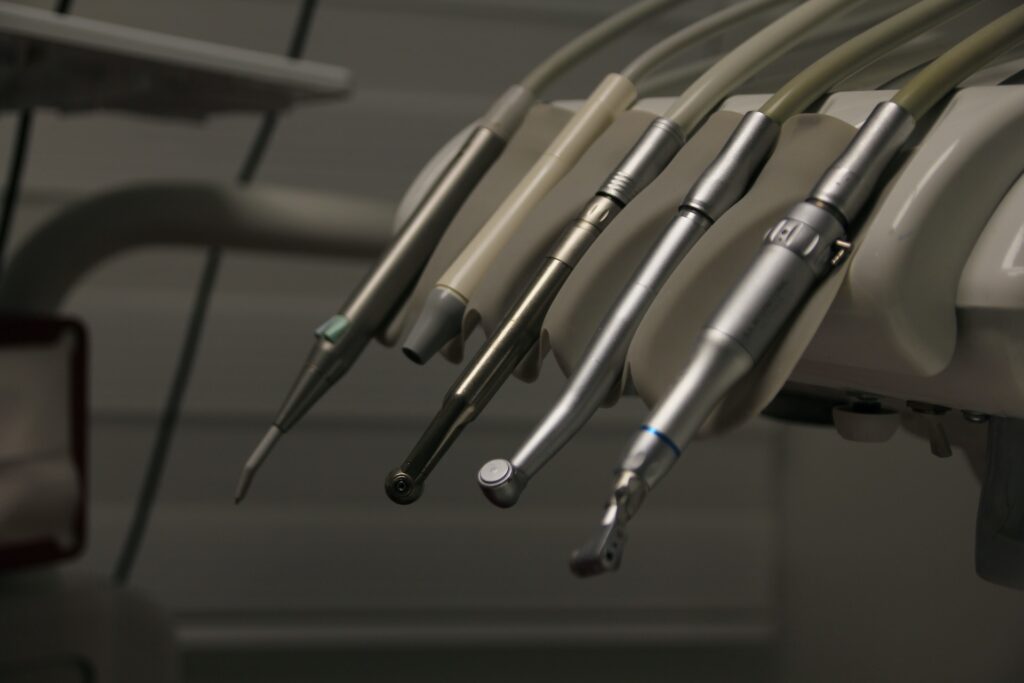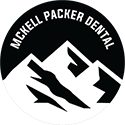Gum disease is a widespread oral health concern that impacts a substantial portion of the global adult population. This condition spans a spectrum, from mild gum inflammation and progressing to more severe stages that can harm the supporting soft tissue and bone of the teeth. In its extreme forms, it can even result in tooth loss. The insidious nature of periodontal disease means it can progress quietly, often without pain, making it easy to overlook until it becomes severe.
The importance of early detection and treatment of periodontal disease cannot be overstated. When caught early, the progression of gum disease can often be halted and even reversed, preserving the integrity of your gums, teeth, and overall oral health. This is why understanding the signs and symptoms of periodontal disease and regular dental check-ups is crucial.

What is Periodontal Disease?
Periodontal or gum disease comprises a group of inflammatory conditions that impact the tissues surrounding the teeth. It is primarily caused by bacterial infections that, if left untreated, can significantly damage the gums and the supporting bone structures of the teeth. This disease is one of the leading causes of tooth loss in adults.
Different Stages of Periodontal Disease
Gingivitis
Gingivitis represents the initial stage of periodontal disease, marked by gum inflammation primarily caused by the accumulation of plaque, a sticky bacterial film forming on teeth surfaces. Signs of gingivitis include redness, swelling, and the potential for bleeding gums during brushing or flossing. Fortunately, gingivitis is a reversible condition through the implementation of correct oral hygiene practices and seeking professional dental care.
Periodontitis
When left unaddressed, gingivitis can advance into periodontitis, a more severe manifestation of gum disease. In periodontitis, the inner gum layer and bone gradually detach from the teeth, giving rise to pockets that have the potential to become infected. At this stage, gum disease can result in the erosion of the supportive bone and connective tissue responsible for anchoring the teeth. Managing periodontitis demands more intricate treatment and can exert lasting repercussions on oral health.
Causes and Risk Factors for Developing Periodontal Disease
Plaque Accumulation
The primary cause of gum disease stems from the buildup of plaque, which is a consequence of insufficient oral hygiene practices. Plaque can harden into tartar, further exacerbating gum inflammation.
Risk Factors
Numerous factors can elevate the likelihood of developing periodontal disease. These include smoking, which is one of the most significant risk factors; hormonal changes in females, such as those occurring during pregnancy; diabetes; medications that reduce saliva flow; genetic susceptibility; and other illnesses, particularly those affecting the immune system.
Lifestyle Factors
Poor oral hygiene practices, a diet high in sugar, and inadequate professional dental care contribute to the risk of developing gum disease.
Identifying Gum Disease – Symptoms and Signs
Identifying the symptoms and indications of gum disease is crucial for early intervention and successful treatment. Periodontal disease can often be silent, meaning symptoms may not appear until an advanced stage. However, there are several indicators to watch out for:
Common Symptoms of Gum Disease
- Redness and Swelling: Healthy gums are pale pink and firm. It could be a sign of gum disease if you notice that your gums are red, swollen, or tender.
- Bleeding Gums: One of the most common signs of periodontal disease is bleeding during brushing or flossing. While many people may think this is normal, it indicates an issue with your gum health.
- Receding Gums: A symptom of progressing gum disease is when the gums recede, causing the teeth to appear longer.
- Persistent Bad Breath: Persistent bad breath or an unpleasant taste in the mouth can also serve as an indicator of periodontal disease.
Less Obvious Signs That Might Indicate Periodontal Issues
- Loose Teeth: As gum disease progresses, the supporting structures of the teeth can be compromised, leading to tooth mobility.
- Changes in Bite: If you notice a change in how your teeth fit together when you bite, it could be due to the shifting of teeth due to periodontal disease.
- Pus Between Teeth and Gums: The presence of pus is a clear sign of infection, a severe symptom of periodontal disease.
Can Gum Disease Be Cured?
A common question among gum disease patients is whether it can be cured entirely. The answer varies depending on the stage and severity of the disease. Understanding the nature of gum disease and its progression is vital to managing and potentially reversing its effects.
Reversibility of Different Stages of Gum Disease:
- Gingivitis: During its initial phase, gum disease is referred to as gingivitis and is typically reversible. Adhering to proper oral hygiene practices and seeking professional dental care can effectively alleviate inflammation and return your gums to a healthy condition. This stage is recognizable through the presence of swollen, red gums that may bleed while brushing or flossing.
- Periodontitis: Once gum disease progresses to periodontitis, it becomes more complex to manage. While the damage to the gums and bone at this stage cannot be completely reversed, it can be effectively managed with professional treatment. The goal here is to halt the progression of the disease and prevent further damage.
Long-Term Implications of Untreated Gum Disease
- Tooth Loss: One of the most severe consequences of untreated periodontal disease is tooth loss due to the deterioration of the tooth-supporting structures.
- Systemic Health Issues: Studies have established a connection between periodontal disease and various systemic health concerns, encompassing heart disease, diabetes, and respiratory conditions. The inflammation associated with gum disease can exert widespread effects on overall health.
- Quality of Life: Advanced gum disease can affect speech, chewing ability, and overall comfort, significantly impacting one’s quality of life.
Treating Periodontal Disease
Gum or periodontal disease is a prevalent oral health issue requiring prompt and effective treatment. We will explore the various aspects of treating gum disease, from early intervention to advanced treatment options.
Gingivitis Treatment
The initial stage of periodontal disease is known as gingivitis. It is marked by gum swelling, redness, and bleeding, frequently occurring while brushing or flossing. Gingivitis is generally reversible with proper oral hygiene practices, including regular brushing, flossing, and professional dental cleanings. Dentists may also recommend antiseptic mouthwash to help control bacteria.
Scaling and Root Planing
When gum disease progresses beyond gingivitis to periodontitis, a more intensive treatment called scaling and root planing may be necessary. This procedure involves deep cleaning the tooth’s root surfaces to remove tartar and bacteria. A dentist can perform it and may require local anesthesia for comfort.
Antibiotics
In some cases of advanced gum disease, antibiotics may be prescribed to control bacterial infection. These can be administered orally or topically directly into the gum pockets during scaling and root planing.
Surgical Interventions
For severe cases of periodontal disease, surgical procedures may be required to restore gum and bone tissue. These procedures include flap surgery, bone grafts, and tissue regeneration to repair damage caused by advanced periodontitis.
Ongoing Maintenance
Treating gum disease is not a one-time event. It requires ongoing maintenance to prevent recurrence. Patients are encouraged to adhere to proper oral hygiene routines, attend regular dental check-ups, and follow the recommendations of their dental care providers.
Treatments tailored to individual needs
When dealing with gum disease treatment, there is no universal solution that fits all. Each person’s condition is distinctive, and what may be effective for one individual might not be suitable for another. That’s why a comprehensive evaluation by a dental specialist is essential in crafting a customized treatment strategy tailored to your specific requirements.
The Importance of a Professional Examination
A thorough dental assessment is the first step in effectively treating gum disease. During this examination, a dentist can assess the health of your gums, measure the depth of your gum pockets, check for areas of bleeding or inflammation, and possibly take X-rays to evaluate bone loss.
A professional evaluation will help diagnose the stage of your gum disease and identify the underlying causes. This could include factors like oral hygiene practices, lifestyle choices, and genetic predispositions.
Scheduling a Consultation for an Accurate Diagnosis
We highly recommend scheduling a dental consultation with one of our skilled dental professionals if you have any concerns regarding the health of your gums. This is particularly important if you’re experiencing symptoms like bleeding gums, persistent bad breath, gum recession, or loose teeth.
During the consultation, be open about your medical history, lifestyle, and any symptoms you’re experiencing. This information will enable your dental care provider to customize a treatment plan specifically for your needs.
Conclusion
Periodontal or gum disease can range from mild gingivitis to more severe periodontitis. It can affect the gums and the supportive bone of the teeth. Initially, it manifests through early symptoms such as gum redness, swelling, and bleeding. When left unaddressed, gum disease can advance to more severe stages, potentially leading to tooth loss and triggering other notable health issues.
Treatment options vary based on disease severity, encompassing improved oral hygiene, non-surgical methods like scaling and root planing, and surgical interventions in advanced cases, all guided by personalized treatment plans developed through professional dental examinations, such as those offered by our dentists at McKell/Packer Dental in Utah County.
Early detection and intervention are pivotal, with regular dental check-ups and cleanings crucial in preventing its onset and progression. Professional care treats gum disease and offers guidance on maintaining optimal oral hygiene and lifestyle choices that support gum health. We encourage proactive steps in oral health maintenance, including adhering to a daily oral hygiene routine, making informed lifestyle choices, and seeking regular professional dental care. If you experience gum disease symptoms or oral health concerns, don’t hesitate to consult a dental professional for early intervention, as it can significantly preserve oral health and prevent more severe complications. Remember, caring for your gums is integral to overall health and well-being, ensuring a healthy smile for years to come.

